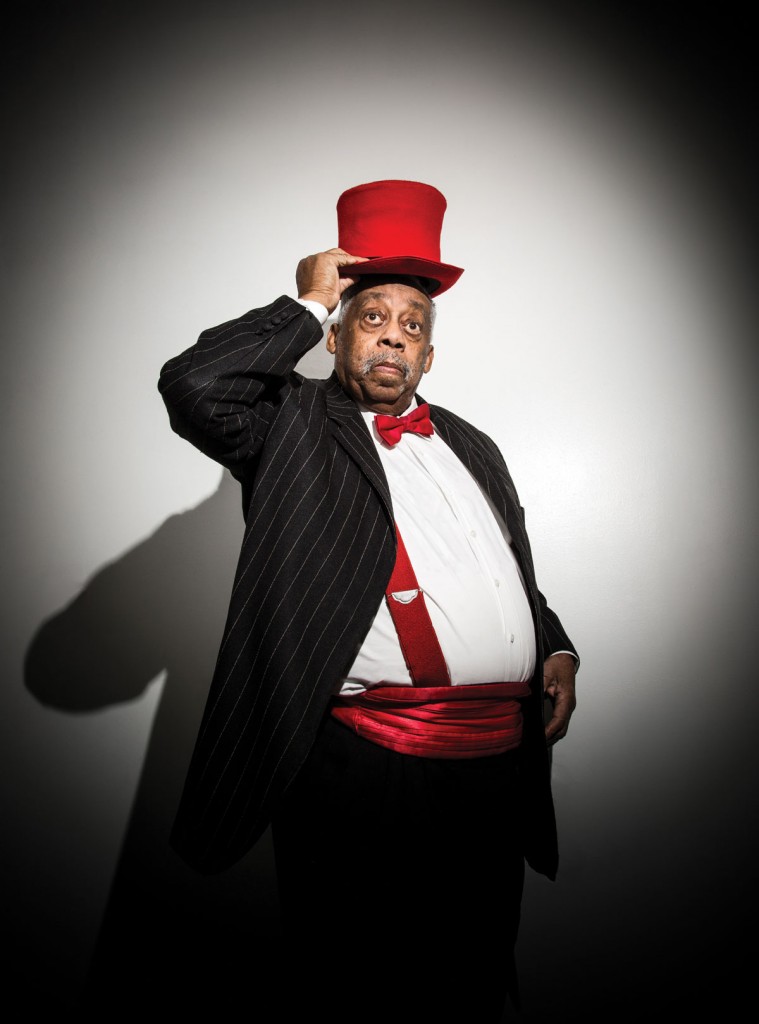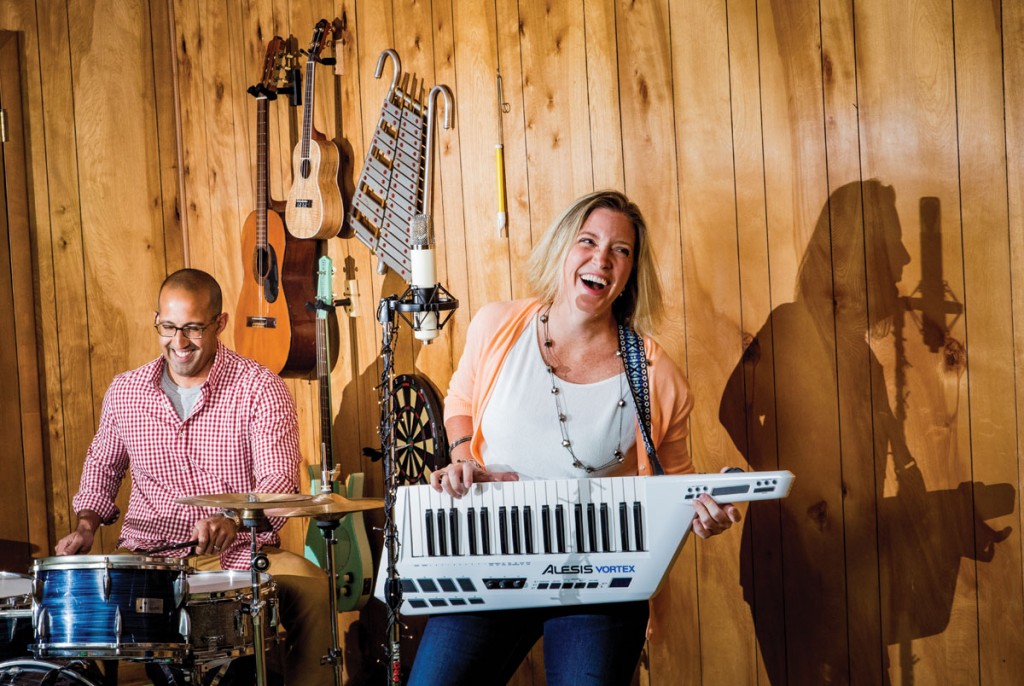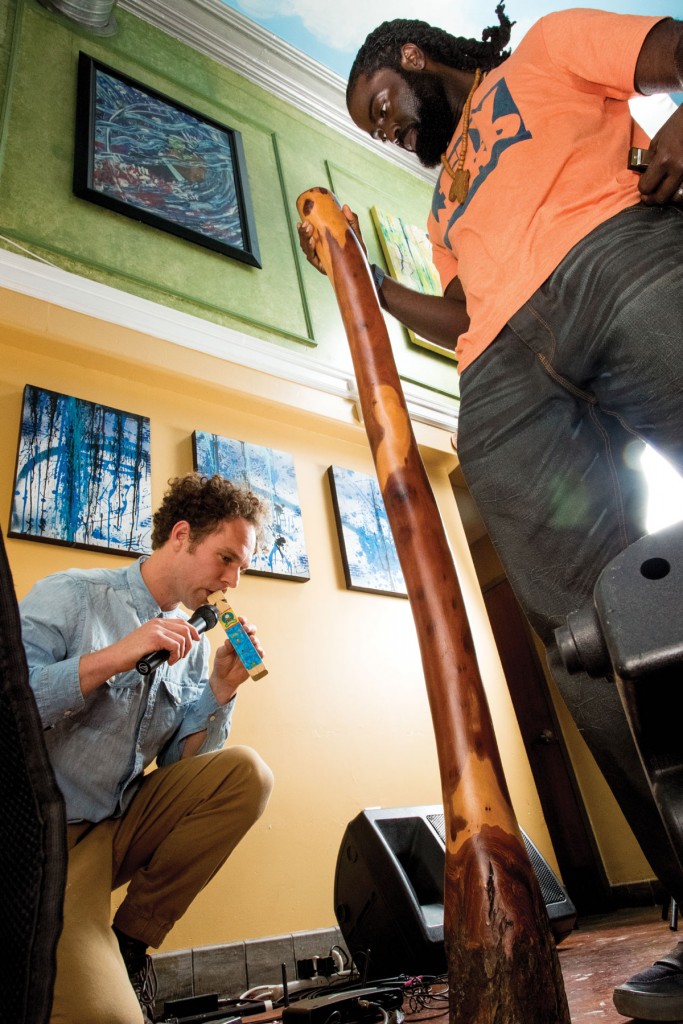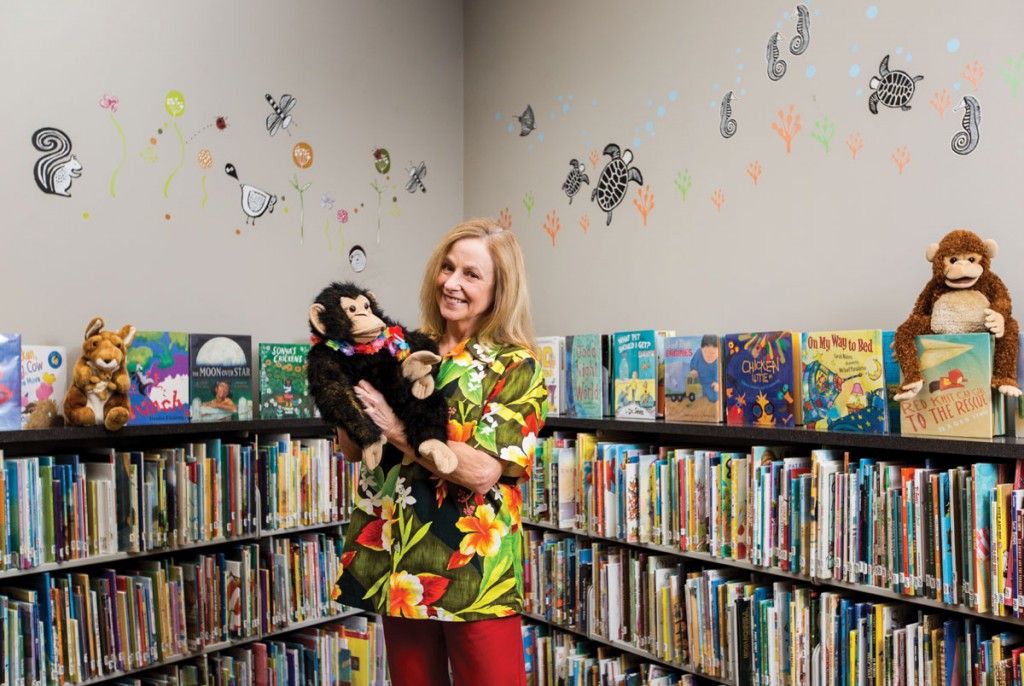* Disco king *
Nearing 80, the legendary Kinderman’s still bringing song and dance to local little ones.
When John “Kinderman” Taylor arrives for a gig, he brings along his original infectious rhyming songs about colors and the alphabet, immersive stories that impart important life lessons and, perhaps most significantly, a warm, loving vibe. His young kids’ audiences dance, chant and engage in call-and-response sing-alongs, all part of an interactive program he calls “Kindercise” that’s designed to educate while it entertains.
Taylor starts each performance with a ditty that creates an instant rapport, singing, “I’m very glad you came today.” He means it.
A three-time regional Emmy Award winner for “It’s Kindertime” (broadcast locally on WMAR-TV/Channel 2), Taylor knew from an early age that he wanted to be aperformer. But it wasn’t until he saw Fred Rogers on public television’s “Mister Rogers’ Neighborhood” show that he sprang into action: “I said, ‘I want to do that.’” And so he did: He’s been performing at schools, libraries and conferences for nearly four decades. Plus, as a master teaching artist at the Wolf Trap Institute for Early Learning in Northern Virginia, he leads a family involvement workshop entitled “Rhythm, Chants and Space Games: Movement for Memory.”
Born and raised in Baltimore, Taylor graduated from Morgan University with a bachelor’s in arts education and earned an MFA in the same discipline from MICA. In addition to his Kinderman career, he has worked as an educator and, for a while back in the 1970s, engaged in a different kind of teaching: dance. As the Disco King, he instructed women in the intricacies of disco dancing during its heyday, including Oprah Winfrey, who, back then, co-hosted a show on Baltimore’s WJZ-TV (Channel 13).
Some recent health problems have caused the soon-to-turn-80 Kinderman to cut back his schedule from nearly a performance each day to an average of three a week, but he remains as enthusiastic as ever, dismissing the possibility of retirement and determined that his show must go on: “I’ll probably fall out on stage,” he says, throwing his head back and laughing.
-Kay Wicker
* Lawyers who boogie *
Meet the married couple behind Here Comes Trouble.
Husband-and-wife duo Jon Babu and Kelly Donohue are a pair of lawyers who spend their nights and weekends writing goofball songs to make children laugh. Their aptly named act? Here Comes Trouble.
Donohue describes her career as a zigzag. A conservatory-trained musician, she was making ends meet by working odd jobs and various performance gigs like weddings. “I have so much respect for those that make a full-time career of being a full-time musician,” says Donohue. “But the prospect of not having health insurance and living paycheck to paycheck terrified me.”
So she pursued a law degree in North Carolina and ended up trading in renditions of Kool and the Gang’s “Celebration” for torts and textbooks. But her love of music persisted. “I really love Stravinsky, Mingus, Ella Fitzgerald and Ani DiFranco…” she says. “I think I just love artists that push the envelope but are still accessible.”
Now, Babu and Donohue have turned their musical side project into a family affair. They cart their kids to their performances and have them sing background vocals on tracks. “It is super important to me that they see us doing things we love and ‘going all in’ on life so that someday they will have confidence to do the same,” says Donohue.
“I try to be a strong role model for girls,” she continues. “I have noticed that there are very few women musicians who sing about ridiculous or absurd or even slightly inappropriate things, while there are plenty of funny male artists who do that. I think it is important to show girls that being funny and even a bit outrageous is more than OK.”
Maybe not everyone would think it’s A-OK for a legal professional to spend her free time recording songs like “Goo On My Shoe,” a reggae jam that transitions to a riff on the ‘80s classic “It’s Raining Men.” But Donohue has a message for the haters: “Anyone who doesn’t get it can just move along! I enjoy my happy, quirky little life. I get to write about boogers on the one hand and write legal briefs on the other.” Who else can say that?
—Saralyn Lyons
* big drummer boys *
Hip-hop collaborators Max Bent and Jamaal Collier make baby-ful music together.
At first glance, you might assume that Max Bent—a lanky, blue-eyed white guy in a porkpie hat—and Jamaal (Black Root) Collier—a large, bearded black man with a thick mane of dreads—make for an unlikely musical duo. But the pair’s audience doesn’t see it that way: Under the name Baby Beats, these hip-hoppers rock rhythm for tiny kids.
The 30-something performers’ story began in the Washington, D.C. area—Bent is originally from Hyattsville, Md., and Collier is a first-generation Costa Rican and Guyanese American who grew up in the District’s Fort Totten neighborhood. They both admire Bobby McFerrin for his beatboxing work, and they both grew up imitating sounds—Collier mocking helicopters and Bent fascinated with go-go music’s funky noise. Not forgetting: They’re both dads.
The two crossed paths more than once while making the rounds of the children’s music circuit. “We had been talking about working together for at least a year,” Collier says. Several jam sessions later, Baby Beats was born.
Baby Beats combines beatboxing and percussion to teach children rhythm. “That’s huge for children who are preverbal,” explains Bent.
Neither has classical training, but they know their stuff. Offstage, Bent studies ancient Indian music, while Collier performs in another band, Black Root Underground (for adults).
“I like to use [acoustic] instruments to keep things basic for the kids,” says Bent. “They can see directly what’s creating the sound.” Like didgeridoos, hand percussion instruments—including bones—and, of course, their voices. Loop pedals record beats so they can layer sounds during improvised moments.
“We’re thinking of writing and recording things to help the effort,” Bent says. “And including more guests,” Collier adds.
Over the course of a half-dozen gigs at Single Carrot Theatre, Bent and Collier have shared the stage with a handful of local musicians. They hope to do so more often—and in the near future.
“When you become a parent, you can become isolated,” says Collier. “You have to [cut people out] in order to be a good parent. But with Baby Beats, we’re building a community.”
Also, he says, “We’re really just big kids at heart.”
—Kay Wicker
* Puppet master *
Michael Lamason pulls strings at Black Cherry Puppet Theater.
Forty years ago, Michael Lamason and his classmates at MICA jumped at the chance to make an “unheard of” six dollars an hour. The city had just begun funding puppet troupes to perform at underserved public schools and community centers, and he and his friends vowed to win a part in the paid gig.
“We decided that we would do a marionette show—which is the most complicated type of puppet to do!” Lamason says.
The city said “Yes,” and the troupe’s inaugural tour hit 107 rec centers in seven weeks.
Back then, in the ‘70s, one guy built the puppets, another guy did the stage and the rest of the team “put it all together, made a soundtrack and went off and did it,” Lamason says. And they learned by passionate trial and error.
Today, Lamason still leads what became the iconic Black Cherry Puppet Theater in 1980—the company is located in Southwest Baltimore—though he prefers the title puppeteer. The theater receives a variety of local funding.
Lamason and his striking puppet cast—slightly gaunt, stylized figures with great knobby heads and exaggerated cheekbones, noses or attire—instill a love of art, artistry and innovation wherever they go.
New technology offers more opportunity than ever for integrating lighting and technical cues into the performances.
But for Lamason, sometimes it’s better not to mess with perfection.
“We used to lug around a sound system that was 50 pounds,” he says. “Now we can carry it in one hand. But on the other side, analog sounds a lot fuller than digital sounds, so there are tradeoffs. In the theater, we’re going back to the tube amp, because we have the space—and it sounds better.”
Lamason’s field of study at MICA—printmaking—didn’t exactly lend itself to puppet-making, but he considers them both to be process-oriented disciplines that rely heavily on graphics. Now, he has a work-study partnership with MICA to continue to give back and support artists, and he finds that many student workers come from the fibers department.
Lamason runs the administrative side of the nonprofit theater in the organization’s founding spirit: to get paid.
“You can’t eat publicity,” he says, remembering his own early days with the troupe. “Almost the entire take from ticket sales goes to the performers. Black Cherry’s goal has always been to pay artists.”
—Saralyn Lyons
* didgeridoo the right thing *
Performer Tracey Eldridge feels an authentic connection to clowning.
When pals from back in the day ask Tracey Eldridge what she’s been up to, they’re usually surprised to learn how much time she’s spent clowning around—quite literally. Eldridge shares her lifelong love of music with her young audiences, and is known especially for her silly songs—like “Happy Hula Day” and “Gollie Ollie Ostrich”—and her knack for an unusual instrument: the didgeridoo.
Eldridge, also known as Sweet Pea, is a children’s entertainer booked solid most weekends for parties. She has recorded one CD of original music and boasts face-painting, balloon-sculpting and clowning skills—and she teaches a music curriculum at local pre-K classrooms and in nursing homes. For the Harford County resident, entertaining is merely an extension of who she is.
“There’s no artifice about it,” she says. “I feel that my [performance] persona is very natural.”
Eldridge’s wheelhouse has always included being a musical performer with a unique edge, but her career options changed over time—as did her audience.
“It used to be that you could join a band and have the band support you,” she says. “But as I got older, I got creative with the ways I could support myself and make a living. I became very diverse,” which led to her jumping at the chance to perform for a friend’s child’s birthday party.
Despite the age differences in her two mainstay audiences, she says performing for children and for seniors is more alike than one might think. “I have a very sincere kind of approach. I try to treat kids with dignity and respect, and try not to be patronizing with them, the same way I perform for seniors.”
Eldridge’s vast travel experience has influenced her music. She performs from a library of musical styles, from zydeco and Dixieland to reggae and Hawaiian. During her performances and music workshops, she showcases world instruments. Kids really get a kick out of the didgeridoo, she says.
What’s the secret to playing the Australian instrument? “It’s all in the buzzing of the lips,” she says. “I guess I learned that back when I played the tuba as a kid.”
—Saralyn Lyons









